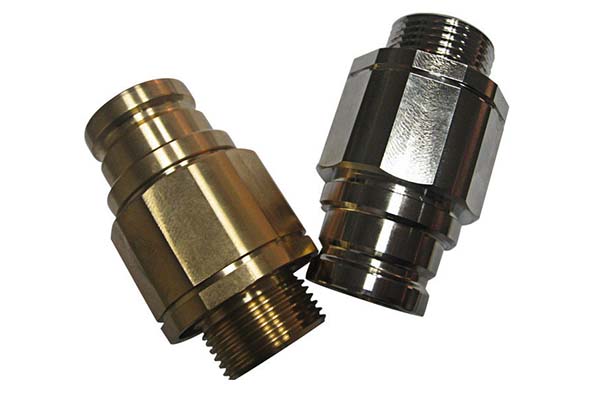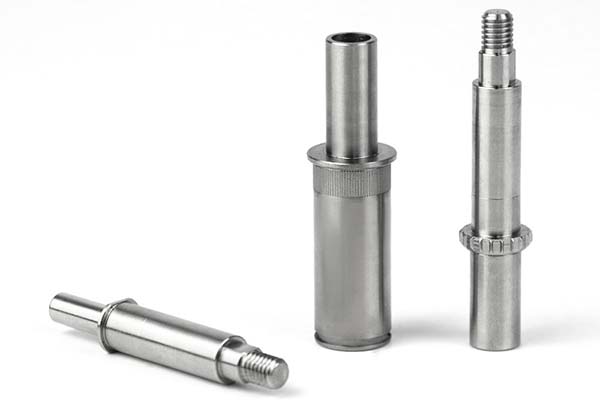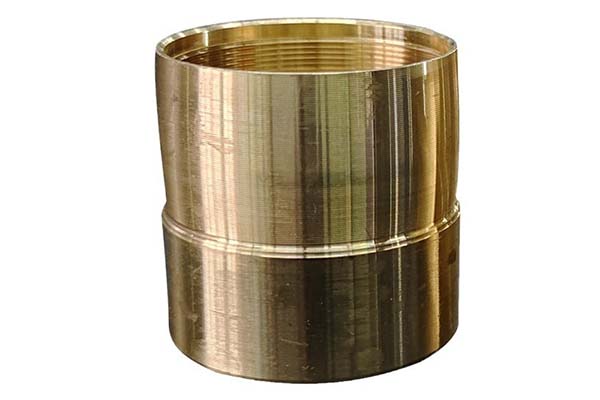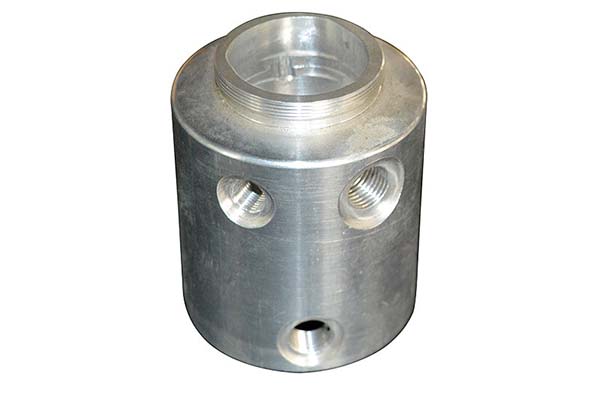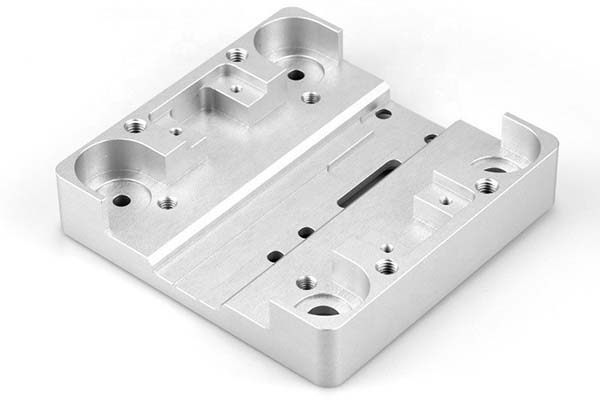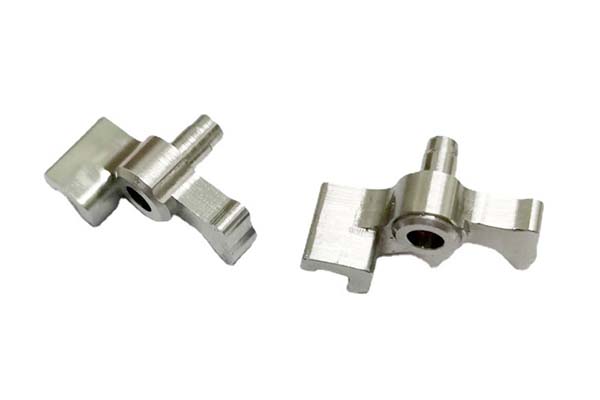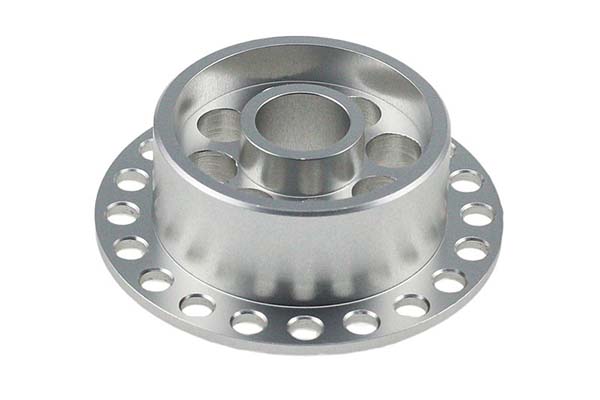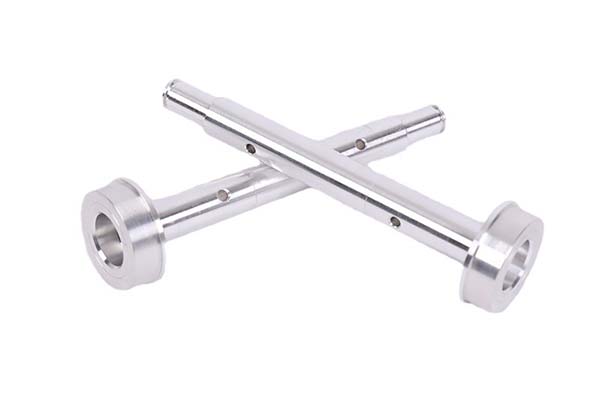What Exactly is a Turning Part?
A turning part, in the realm of precision engineering, is a component that is produced through the turning process, a fundamental machining operation. Turning involves rotating a workpiece on a lathe while a cutting tool removes material from its surface, shaping it into the desired form. This process is highly versatile and can create a wide range of parts with different geometries and specifications.
For example, in the automotive industry, engine shafts are common turning parts. These shafts need to be precisely machined to ensure smooth rotation within the engine. Their cylindrical shape, with various diameters and grooves along the length, is achieved through turning. Another instance is in the aerospace sector, where components like turbine blades’ root sections are often turning parts. These parts must meet extremely tight tolerances to function effectively in high - stress environments.
The basic characteristics of a turning part include a generally cylindrical or rotational symmetry. The surfaces can be smooth, threaded, or have complex profiles. The materials used for turning parts are diverse, ranging from metals such as steel, aluminum, and titanium to plastics and composites. For instance, aluminum is often chosen for its lightweight properties and good machinability in applications where weight reduction is crucial, like in the production of bicycle components. On the other hand, titanium is used in high - performance applications, such as in the medical and aerospace industries, due to its high strength - to - weight ratio and corrosion resistance, despite being more challenging to machine.
The dimensions of turning parts can vary significantly. Small - scale turning parts, with diameters as small as a few millimeters, are commonly found in electronic devices. For Yigu Technology example, the shafts in miniature motors used in smartphones or cameras are precisely turned to ensure efficient operation. In contrast, large - scale turning parts, such as the main shafts in industrial machinery, can have diameters of several meters. These large - scale parts require heavy - duty lathes and advanced machining techniques to produce accurately.
In summary, turning parts are the building blocks in many industries, and their proper understanding is essential for anyone involved in precision engineering. Their diverse applications, materials, and sizes highlight their importance in the manufacturing landscape.
The Manufacturing Process of Turning Parts
From Raw Material to Precision Component
The manufacturing of turning parts is a meticulous process that demands a high level of precision at every stage. The journey from a raw material to a precision - engineered component is a fascinating one, involving several crucial steps.
Raw Material Selection
The first and perhaps most critical step is the selection of raw materials. The choice of material depends on the specific application of the turning part. For example, in the medical device industry, biocompatible materials like titanium alloys are often preferred. Titanium alloys offer excellent corrosion resistance and are non - toxic to the human body, making them ideal for components such as orthopedic implants. In contrast, for parts in the electronics industry that require high electrical conductivity, copper or aluminum alloys might be the materials of choice.
The quality of the raw material has a direct impact on the final product. High - quality raw materials with consistent chemical compositions and mechanical properties are essential. For instance, if the steel used for a turning part has impurities or inconsistent grain structures, it can lead to defects in the final part, such as cracks during machining or reduced mechanical strength. To ensure quality, manufacturers often conduct strict inspections on raw materials. This can include chemical analysis to verify the composition and non - destructive testing methods like ultrasonic testing to detect internal flaws.
Machining on a Lathe
Once the raw material is selected, the turning process begins on a lathe. Lathes come in various types, from traditional manual lathes to highly advanced computer - numerical - control (CNC) lathes. CNC lathes have revolutionized the turning process, offering a high degree of accuracy and repeatability.
The workpiece is securely mounted on the lathe spindle and rotated at a high speed. The cutting tool, which is held in a tool post, is then brought into contact with the rotating workpiece. As the tool moves along the length or radius of the workpiece, it removes material in the form of chips, gradually shaping the part according to the desired design. The feed rate, spindle speed, and depth of cut are carefully controlled parameters. For Yigu Technology example, when machining a small - diameter shaft with tight tolerances, a slow feed rate and high spindle speed might be used to achieve a smooth surface finish. A wrong combination of these parameters can lead to issues such as rough surfaces, dimensional inaccuracies, or even tool breakage.
Precision Machining and Tolerance Control
Precision machining is all about achieving tight tolerances. Tolerances are the allowable deviations from the nominal dimensions of the part. In high - precision applications, such as aerospace components, tolerances can be as small as a few micrometers. To achieve these tight tolerances, advanced machining techniques and high - quality cutting tools are required.
CNC lathes use computer - controlled algorithms to precisely position the cutting tool. They can also be equipped with sensors for real - time monitoring of the machining process. For example, a tool - wear sensor can detect when the cutting tool is starting to wear out. As the tool wears, it can cause dimensional changes in the part. Once the sensor detects excessive tool wear, the CNC system can automatically adjust the tool path or prompt the operator to change the tool, ensuring that the part remains within the specified tolerances.
Finishing Operations
After the initial turning process, finishing operations are often carried out to enhance the surface quality and functionality of the turning part. These can include processes like grinding, polishing, and heat treatment.
Grinding is used to further improve the surface finish and dimensional accuracy. It can remove any remaining surface irregularities from the turning process. Polishing, on the other hand, is mainly for aesthetic purposes or to reduce friction in moving parts. For Yigu Technology example, in the manufacturing of high - end automotive engine components, polishing the surfaces of pistons can reduce friction and improve engine efficiency.
Heat treatment is a crucial finishing process that can significantly alter the mechanical properties of the turning part. Processes like annealing, quenching, and tempering can be used to increase hardness, toughness, or wear resistance. For example, a steel turning part might be quenched and tempered to increase its hardness for use in a high - stress application such as a gear.
In conclusion, the manufacturing process of turning parts is a complex and highly technical one. Each step, from raw material selection to finishing operations, plays a vital role in producing a high - quality, precision - engineered component that meets the demanding requirements of various industries.
Precision: The Core Requirement for Turning Parts
The Significance of High Precision
In the world of precision engineering, high precision in turning parts is nothing short of crucial. It is the cornerstone that ensures the proper functioning, reliability, and safety of countless products and systems across various industries.
In the Aerospace Industry
Take the aerospace industry as an example. Components such as turbine shafts in aircraft engines are critical turning parts. These shafts must be manufactured with extremely high precision. In a jet engine, the turbine shaft rotates at high speeds, often exceeding thousands of revolutions per minute. A deviation of even a few micrometers in its diameter or concentricity can lead to significant imbalances. These imbalances, in turn, generate excessive vibrations. High - speed vibrations in an aircraft engine can cause rapid wear of bearings, damage to other engine components, and ultimately, a loss of engine efficiency or even engine failure. Given the high - stakes nature of aerospace applications, where the safety of passengers and crew is at risk, the precision requirements for turning parts are set to the highest standards. For instance, some aerospace - grade turning parts need to maintain tolerances within ±0.001 mm, which is far beyond what is acceptable in many other industries.
In the Medical Equipment Field
In the medical equipment field, precision in turning parts is equally vital. Consider components in surgical instruments, such as the shafts of arthroscopic tools used in minimally invasive surgeries. These tools need to be precisely machined to ensure smooth movement within the body during procedures. A poorly - made turning part in a surgical instrument could cause inaccuracies in the operation, leading to potential harm to the patient. Another example is in the production of implantable medical devices like hip implants. The surfaces of these implants must be machined with high precision to ensure proper fit within the patient's body. If the dimensions are off, it can cause issues such as poor bone integration, increased risk of infection, or premature failure of the implant. In fact, for some medical implants, the surface roughness requirements are so strict that they are measured in nanometers. This high - level precision ensures that the implant interacts optimally with the body's tissues, promoting long - term functionality and patient well - being.
In the Automotive Industry
The automotive industry also heavily relies on high - precision turning parts. Engine crankshafts, which are complex turning parts, play a fundamental role in converting the reciprocating motion of the pistons into rotational motion. If the crankshaft is not machined precisely, it can cause engine misfires, reduced fuel efficiency, and increased emissions. The connecting rods that link the pistons to the crankshaft are also turning parts that require tight tolerances. Precise manufacturing of these components ensures smooth engine operation, reduces wear and tear, and extends the overall lifespan of the engine. In modern high - performance engines, the tolerances for crankshafts and connecting rods can be as small as ±0.01 mm, highlighting the importance of precision in automotive turning parts.
In summary, high precision in turning parts is not just a matter of achieving a perfect finish or exact dimensions; it is about ensuring the normal operation, reliability, and safety of the systems in which these parts are integrated. Whether in the skies, in the operating room, or on the roads, the unsung hero - the turning part - must meet the most stringent precision requirements to fulfill its vital role.
Turning Parts vs. Other Components: A Table - Style Comparison
Performance and Application Differences
When it comes to precision engineering, turning parts have distinct differences from other components in terms of performance and application. The following Yigu Technology table provides a detailed comparison:
| Comparison Items | Turning Parts | Other Common Components (e.g., Forged Parts, Molded Plastic Parts) |
| Precision | Can achieve extremely high precision, with tolerances often in the range of ±0.001 - 0.01 mm in high - end applications. For example, in aerospace turbine shaft manufacturing, the precision requirements are extremely strict. | Forged parts generally have lower precision compared to turning parts. Tolerances are usually in the range of ±0.1 - 0.5 mm, suitable for applications where high precision is not the top priority, such as some large - scale structural components in construction machinery. Molded plastic parts also have relatively lower precision, typically with tolerances around ±0.2 - 1 mm, and are commonly used in consumer products like plastic toys. |
| Durability | High - quality turning parts made from suitable materials and proper heat treatment can have excellent durability. They can withstand high - stress and high - wear environments well. For instance, in automotive engine crankshafts, turning parts endure continuous cyclic loads. | Forged parts can be very durable in applications that require high strength and impact resistance, such as in the manufacturing of heavy - duty truck axles. However, their durability may be affected by the forging process and material quality. Molded plastic parts generally have lower durability compared to metal - based turning parts and forged parts, especially in high - temperature or high - stress environments. They are more suitable for applications with lower stress requirements. |
| Applicable Scenarios | Ideal for applications that demand high precision and smooth surface finish, such as in the medical equipment industry for components in surgical instruments and implantable devices, and in the high - end electronics industry for small - scale precision shafts. | Forged parts are often used in applications where high strength and toughness are required, like in the manufacturing of large - scale machinery parts, such as the frames of bulldozers. Molded plastic parts are mainly used in consumer goods, such as the housings of mobile phones and the bodies of small household appliances, due to their low cost and ease of mass - production. |
| Surface Finish | Turning parts can achieve a very smooth surface finish, with surface roughness values (Ra) often in the range of 0.1 - 0.8 μm in precision turning operations. This smooth surface is crucial for applications where friction needs to be minimized. | Forged parts usually have a relatively rough surface finish, with Ra values typically around 1.6 - 6.3 μm. Surface finishing processes are often required to improve their surface quality if needed. Molded plastic parts have a surface finish that depends on the mold quality and the plastic material. The surface roughness is generally in the range of 0.8 - 3.2 μm, which is not as smooth as precision - turned parts. |
| Material Adaptability | Turning can be applied to a wide variety of materials, including metals (such as steel, aluminum, titanium), plastics, and composites. Different materials can be processed to meet different application requirements. | Forged parts are mainly limited to metals with good forgeability, such as steel, aluminum alloys, and some copper - based alloys. The forging process is not suitable for most plastics and composites. Molded plastic parts, as the name implies, are mainly made from plastic materials, although some composite materials with a high - plastic matrix can also be used in the molding process. |
From the above comparison, it is evident that turning parts stand out in applications where high precision, smooth surface finish, and adaptability to various materials are crucial. Their unique manufacturing process enables them to meet the demanding requirements of industries that require the highest level of engineering precision, making them an unsung hero in precision engineering.
Conclusion
In Yigu Technology conclusion, turning parts are indeed the unsung heroes of precision engineering. Their importance cannot be overstated, as they form the backbone of countless products and systems across industries such as aerospace, medical, and automotive.
From the careful selection of raw materials to the highly precise machining processes on lathes and the subsequent finishing operations, every step in the production of turning parts is a testament to the high - level engineering involved. The ability of turning parts to achieve tight tolerances and smooth surface finishes sets them apart from many other components. This precision not only ensures the proper functioning of the end - products but also contributes to their reliability, durability, and safety.
Despite their significance, turning parts often go unnoticed by the general public. They quietly perform their functions within complex machinery and devices, enabling the advanced technologies and modern conveniences that we rely on today. As industries continue to advance and demand higher - performance products, the role of turning parts will only become more crucial.
It is essential that manufacturers and engineers continue to invest in research and development to improve the manufacturing processes of turning parts. This includes exploring new materials, developing more advanced machining techniques, and enhancing quality control measures. By doing so, we can further unlock the potential of turning parts and continue to push the boundaries of precision engineering. In the grand scheme of things, recognizing and appreciating the true worth of turning parts is the first step towards a more advanced and efficient manufacturing future.
Frequently Asked Questions
- What are the most common materials used for turning parts?
The most common materials include metals like steel, aluminum, and titanium. Steel offers high strength and is widely used in applications where durability is key, such as in industrial machinery. Aluminum is favored for its lightweight properties and good machinability, making it suitable for applications like automotive and aerospace components where weight reduction is important. Titanium, with its high strength - to - weight ratio and corrosion resistance, is often used in high - performance applications such as in the medical and aerospace industries. Plastics and composites are also used, especially in applications where cost - effectiveness, non - conductivity, or specific mechanical properties are required, like in some consumer electronics components.
- How does the precision of turning parts compare to other manufacturing methods?
Turning parts can achieve extremely high precision, often with tolerances in the range of ±0.001 - 0.01 mm in high - end applications. This is significantly higher precision compared to many other manufacturing methods. For example, forged parts generally have tolerances in the range of ±0.1 - 0.5 mm, and molded plastic parts typically have tolerances around ±0.2 - 1 mm. The high precision of turning parts makes them ideal for applications where tight tolerances are crucial, such as in aerospace and medical equipment manufacturing.
- What are the key factors to consider when designing a turning part?
When designing a turning part, several key factors must be considered. First is the application of the part, as this determines the required mechanical properties, such as strength, hardness, and corrosion resistance, which in turn influence the material selection. Precision requirements are also crucial; the design must specify the allowable tolerances for dimensions and surface finish. The manufacturing process itself needs to be taken into account. For example, the complexity of the part's geometry should be compatible with the capabilities of the lathe and the cutting tools. Additionally, cost - effectiveness is an important consideration. The design should balance the need for high - quality and precision with the overall cost of production, including material costs, machining time, and finishing operations.
